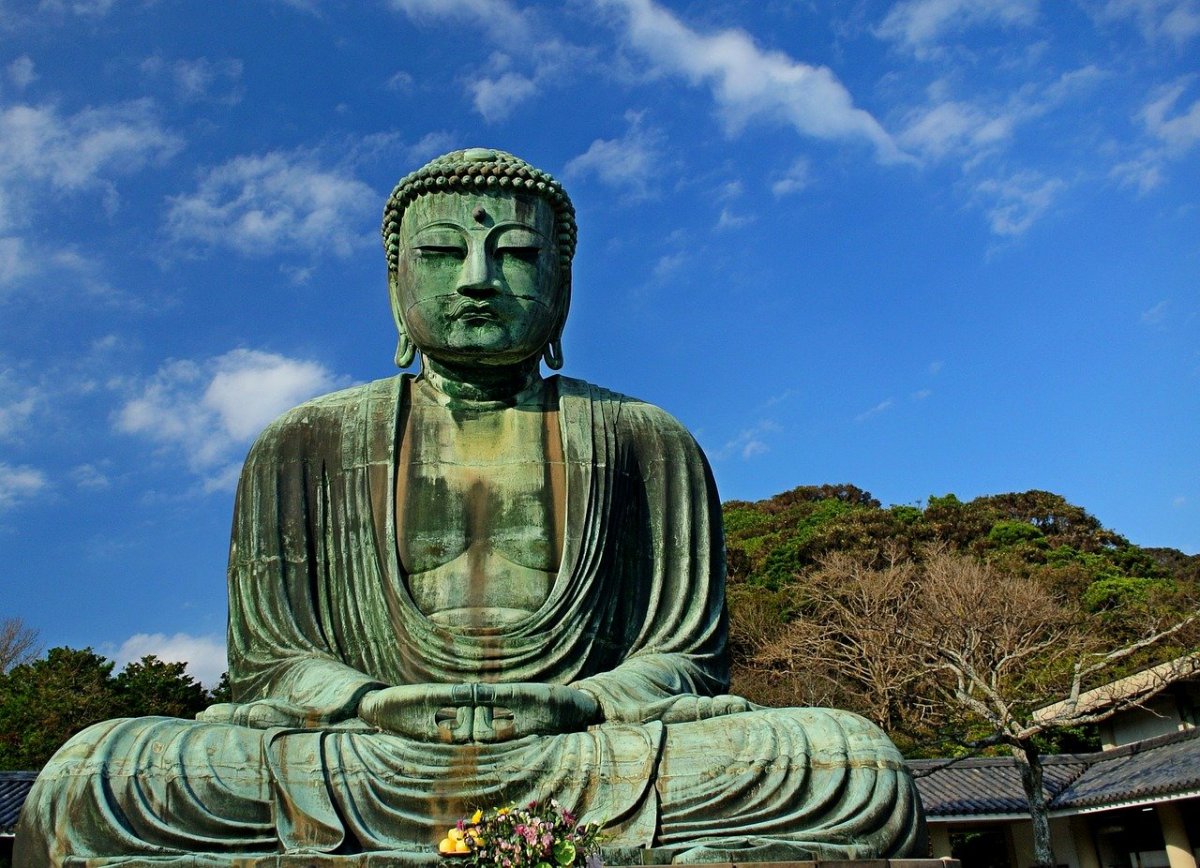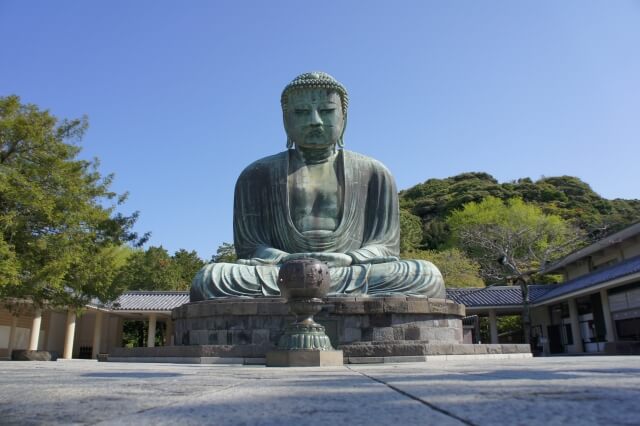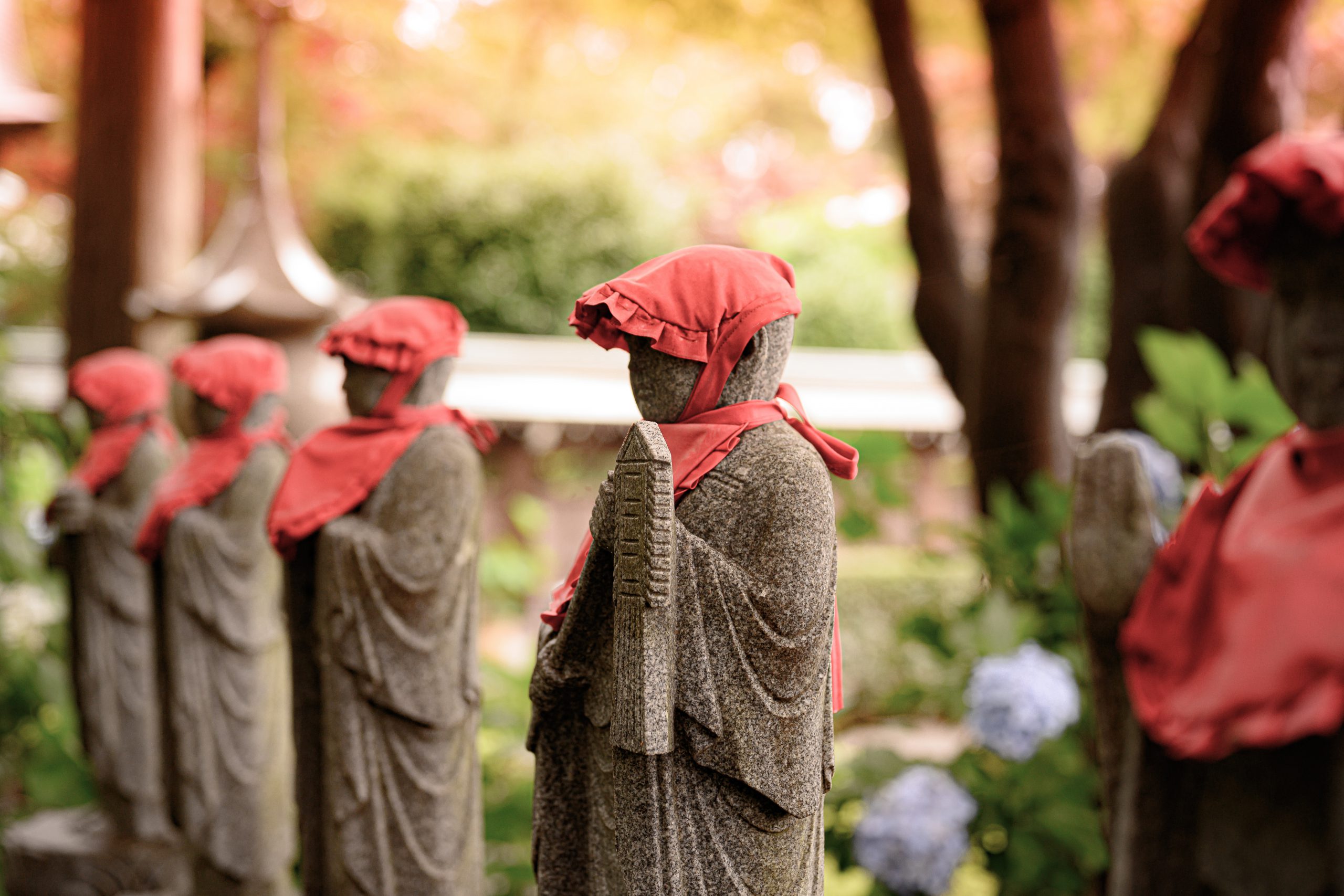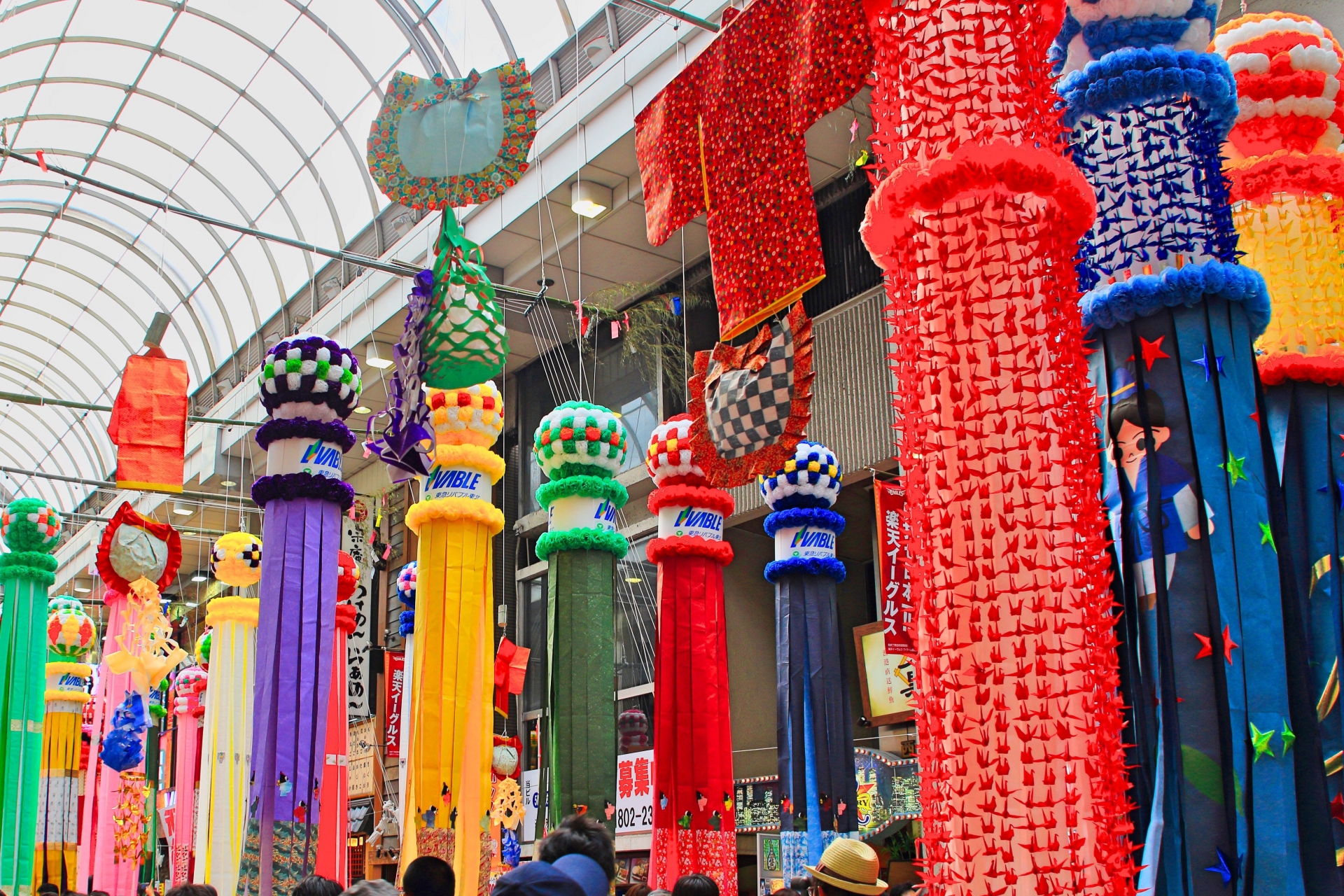Buddhism is one of the main beliefs in Japan, together with Shinto. The religion, which originated in India, was introduced to Japan from Korea by Buddhist monks in the 6th century. Although initially there were a few conflicts with Japan’s native religion, Shintoism, the two beliefs were soon able to co-exist peacefully and complement each other. This blending together of the two religions was called Shinbutsu-shugo and also the reason why sometimes, you will see buddhist buildings near shrines and vice versa. Nowadays, Japan has the world’s third largest Buddhist population and subsequently, traces of Buddhism can be seen everywhere throughout the country. In this article, we provide an overview of Buddhist temples in Japan and their characteristics, next we will introduce some of the most famous Buddhist temples in the country.
Overview of Buddhism
Buddhism was introduced to Japan in the 6th century from Korea by Buddhist monks. Since then several Buddhist sects were introduced to Japan such as Tendai sect, Shingon sect, Jodo sect, Zen sect and Nichiren sect. Although initially there were some conflicts with Japan’s indigenous religion, Shinto, the two religions were soon able to co-exist and complement each other. At this time, Buddhist erections like a pagoda were built on shrine grounds and Shinto shrines near Buddhist temples. During the Meiji Period (1868-1912) however, the Japanese government favored Shinto as the state religion and tried to separate Shinto and Buddhism again, resulting in the destruction of many Buddhist buildings and Buddhist artifacts.
Features of Buddhist Temples in Japan
Pagodas
When you visit a Buddhist temple or “tera” in Japan, you will find a pagoda located within the temple complex. Some pagodas are made from wood, but some are carved out of stone. Wooden pagodas are large buildings with either two, three or five stories. Stone pagodas are generally much smaller, usually well below 3 meters. The pagoda’s symbolic meaning, function and role have changed over time and are seen as a separate accessory structure. Pagodas are an important component of Japanese Buddhist temple compounds, however, you can sometimes find them in Shinto shrines as well.
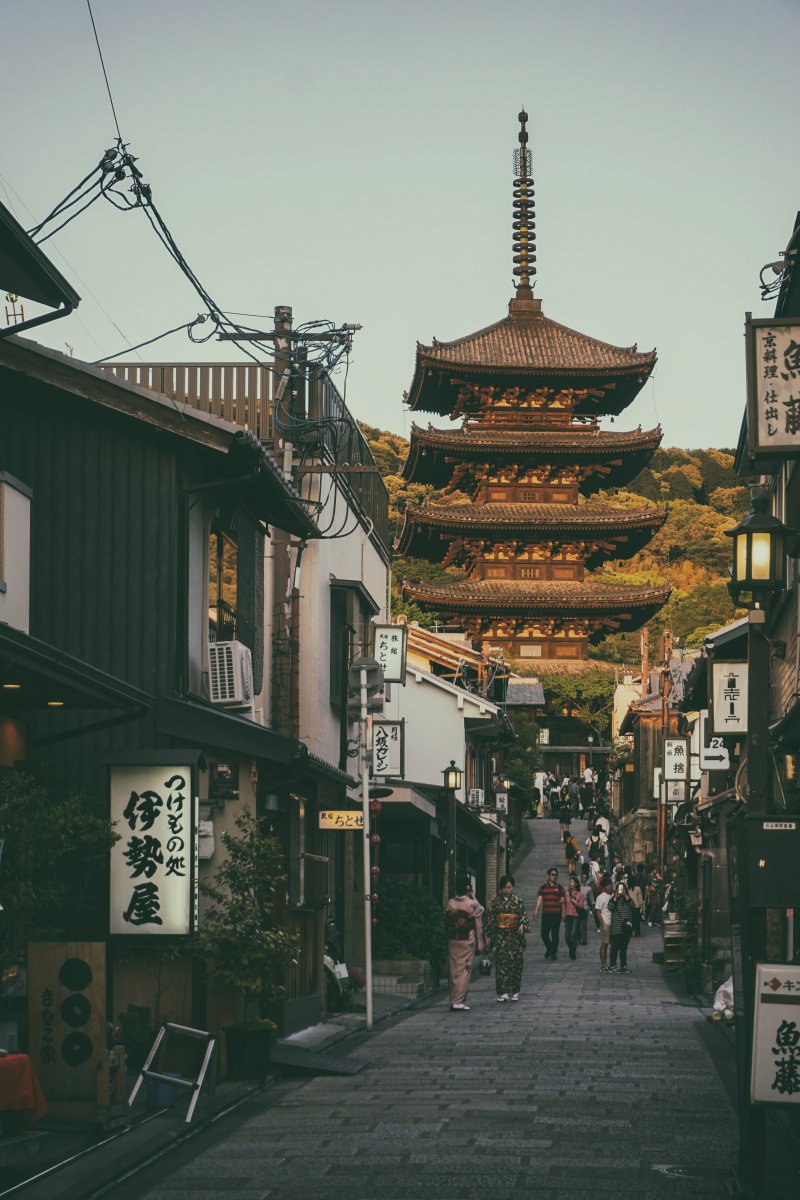
Incense burners
With the introduction of Buddhism in Japan in the 6th century, the burning of incense also began for Buddhist rituals and ceremonies. There are many types of incense, but today one of the most common forms is the incense stick called senko. When you visit some Buddhism temples, you will find incense burners placed near the main temple hall. It is one of the items used on a Buddhist altar to purify the body of the people visiting the temples. It has become a general belief that the smoke from the incense burner has a healing effect too.
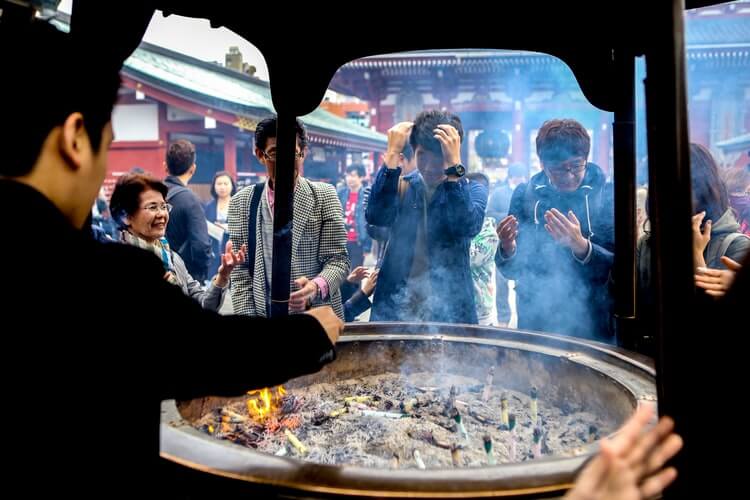
Buddhist statues
A wide range of Buddhist statues are enshrined in temples all around the country. The statues can basically be categorized into four groups; Nryorai, Bosatsu including Kannon, Myo-o, and Ten. They are distinguished by various features such as facial expressions, style of clothing, hairstyle and number of limbs. Nyorai are a relatively small number of Buddhas who have reached the highest stage of enlightenment. They are often called Daibutsu which means great Buddha in Japanese. All the Buddhist statues, regardless of their categorization vary in their size, color, materials and posture.

Gates
At a Zen temple, the most important gate is called sanmon or sangedatsumon, which usually stands between the somon (outer gate) and the main hall called butsuden. Sanmon’s size is an indicator of the Zen temple’s status in question. The sanmon of a first rank temple has a two-storied, 5×2 bay, three entrance gate. A temple of the second rank will have a two-storied, 3×2 bay, single entrance gate and a third rank temple will have a single-storied single entrance gate. The second story of a first or second rank temple usually contains several Buddhist statues.
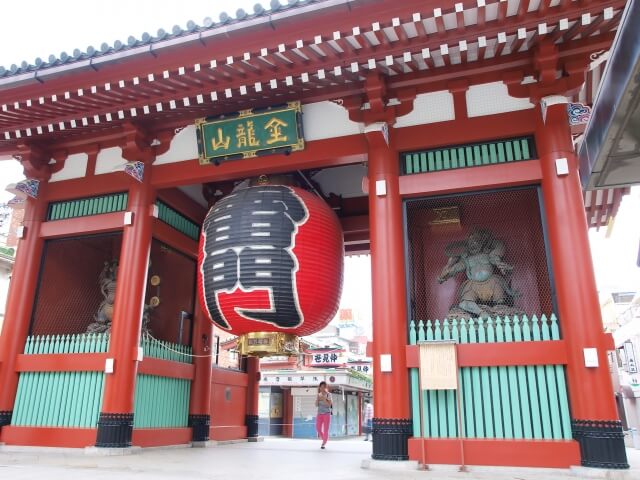
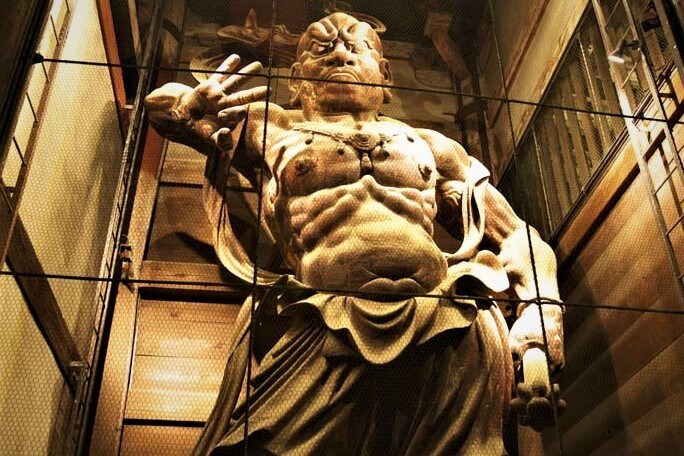
Cemetery
In modern Japan, most funerals follow Buddhist rituals, and the deceased is cremated and buried in a family grave at a cemetery, which are normally found within Buddhist temple grounds. Typically, a Japanese family grave consists of a stone monument with space for flower decoration, incense sticks and water. The individual names of the deceased are, in some cases, engraved on the sides of the tombstone, although this custom differs from region to region.
Great Buddhist Temples to Visit in Japan
Sensoji Temple, Tokyo
Sensoji Temple, also known as Asakusa Kannon Temple, is a Buddhist temple located in Asakusa in Tokyo. This is the oldest Buddhist temple in the capital and one of Tokyo’s most famous and photographed temples. Although Sensoji Temple was founded in 628 the current building is much more modern, as it was rebuilt after being destroyed in WWII.
When approaching the temple, visitors first enter through the Kaminarimon (Thunder Gate), the iconic outer gate of Sensoji Temple. Between Kaminarimon and the temple’s second gate, a shopping street known as Nakamisedori stretches over 200 meters.
After passing the second gate, you will find the temple’s main hall, a five storied pagoda and a large incense burner called jokoro. There is usually a large number of people around the jokoro trying to cover themselves with the incense smoke.
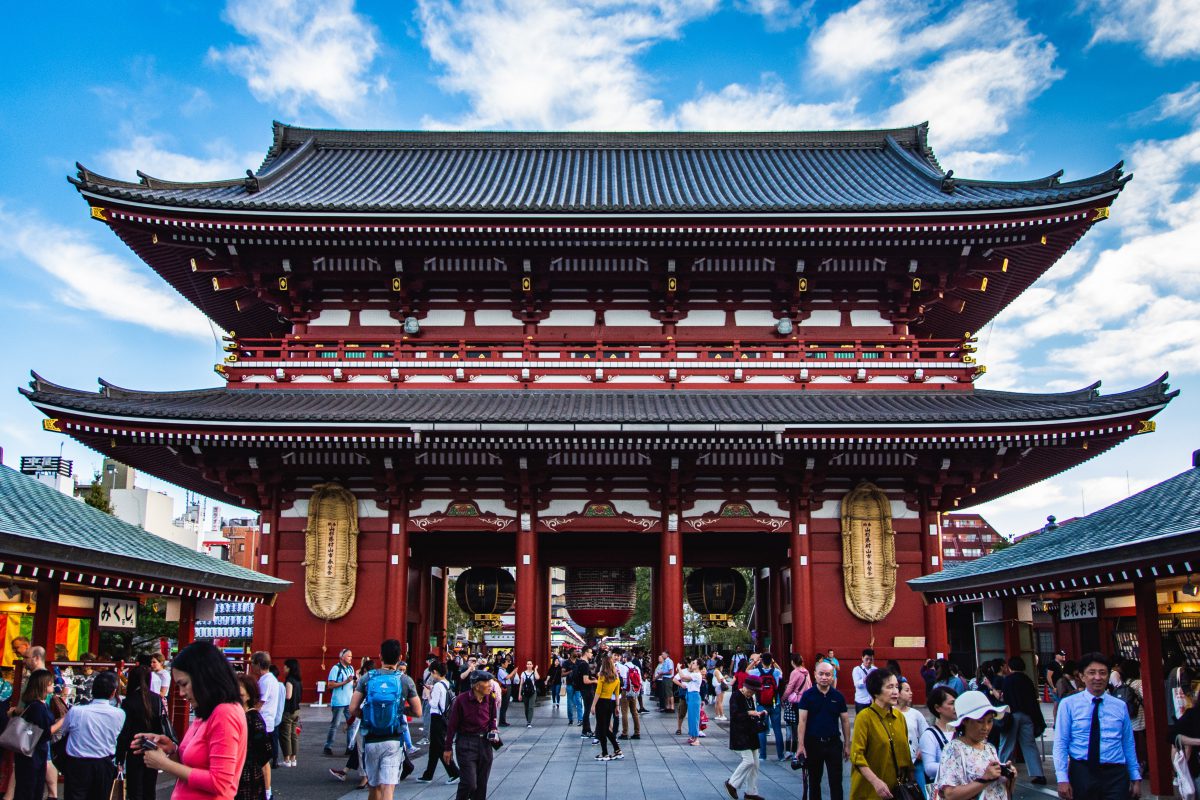
How to access Sensoji Temple
5 minute walk from Asakusa Station on the Tobu Skytree Line, Ginza Metro Line, Tsukuba Express, and Asakusa Subway Line.
Kiyomizudera Temple, Kyoto
Located in the eastern Higashiyama area in Kyoto, the Kiyomizudera Temple is one of the most famous and celebrated temples in the city. The temple was founded in 778 and contains buildings from the 17th century including the main hall which was designated as a National Treasure.
The temple sits on Mount Otowa and reaching the temple is in itself a bit of an uphill walk, but the beautiful temple and the panoramic view make it worth the climb. When you reach the summit, you will be greeted by a grand red Niomon Gate and a three-storied pagoda. The pagoda and gate make this place a popular spot for taking pictures. One of the most most distinctive features of the temple is its wooden stage which offers an outstanding panoramic view of Kyoto.

How to access Kiyomizudera Temple
10 minute walk uphill from Kiyomizu-ichi Bus Stop or Gojo-zaka Bus Stop.
Todaiji Temple, Nara
This temple is one of the most famous and important Buddhist temples in Japan located in Nara Prefecture. The temple complex was completed in 752 during the Nara Period, and now it is designated as a UNESCO World Heritage site.
Todaiji is especially famous for housing the Daibutsu (Great Guddha) that is 15 meters tall and one of the largest bronze statues in the country. The Daibutsu can be found in Todaiji’s main hall, the Daibutsuden (Big Buddha Hall). The Daibutsuden is one of the biggest wooden buildings in the world, despite the fact that the present reconstruction of 1692 is only two thirds of the original temple hall’s size.
You will approach the temple through a large wooden gate called Nandaimon (Great Southern Gate) where two fierce looking Nio figures are guarding the approach to the Daibutsu. They were created by the famous sculptors Unkei and Kaikei in the 12th century.
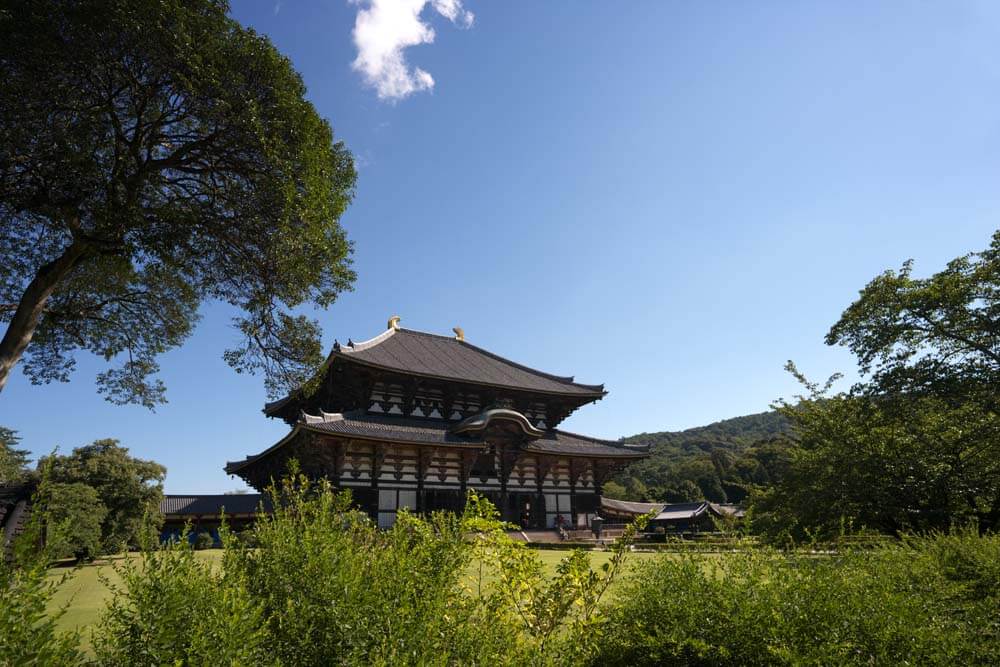
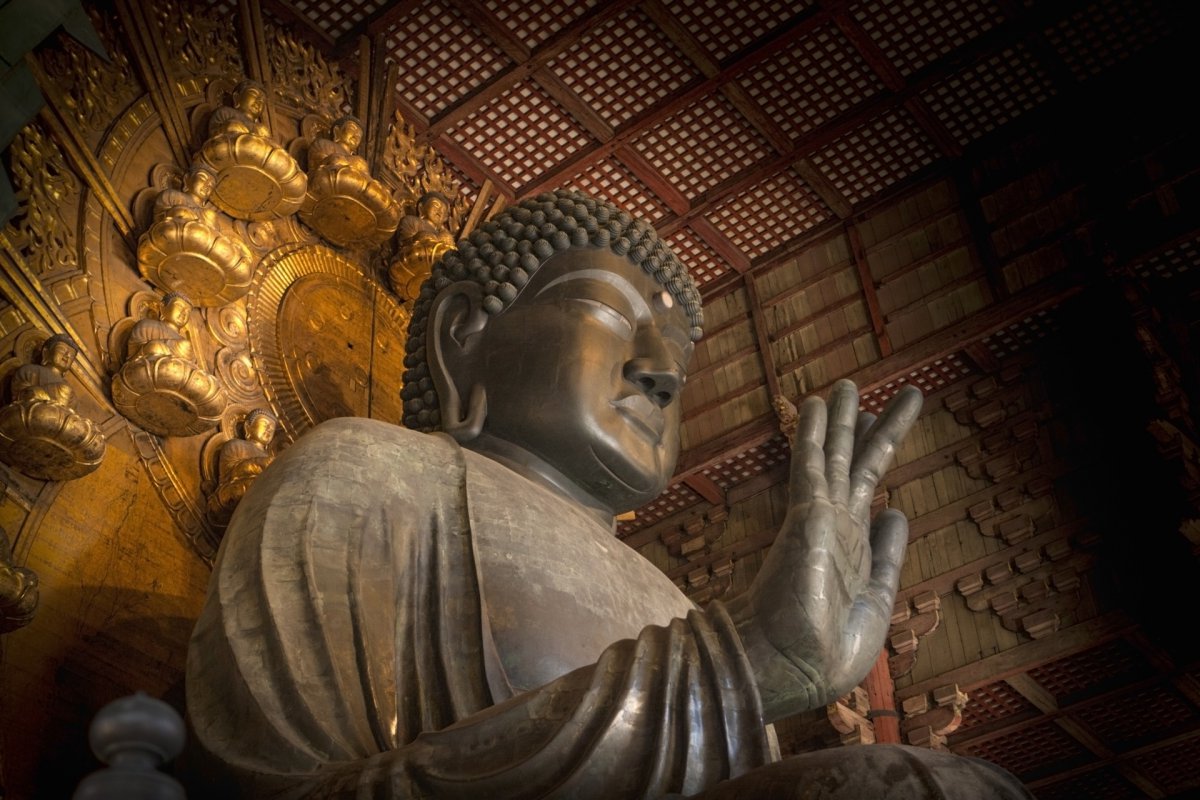
How to access the Todaiji Temple
30 minute walk from Kintetsu Nara Station, or 45 minute walk from JR Nara Station. Alternatively, take a local bus from either station and get off at Todaiji Daibutsuden.
Kinkakuji Temple, Kyoto
Kinkakuji (Golden Pavilion), formally known as Rokuonji, is a Zen temple in northern Kyoto whose top two floors are completely covered in gold leaf. The temple was designated as a UNESCO World Heritage Site in 1994.
The temple was originally built in 1397, and became the retirement villa of shogun Ashikaga Yoshimitsu during the Muromachi period (1392-1573). After Yoshimitsu’s death, the villa was turned into a temple according to his will. The name Rokuon-ji was taken from the first two characters of Yoshimitsu’s posthumous name.
The current building only dates back to 1955 with a thicker layer of gold leaf added in 1987.
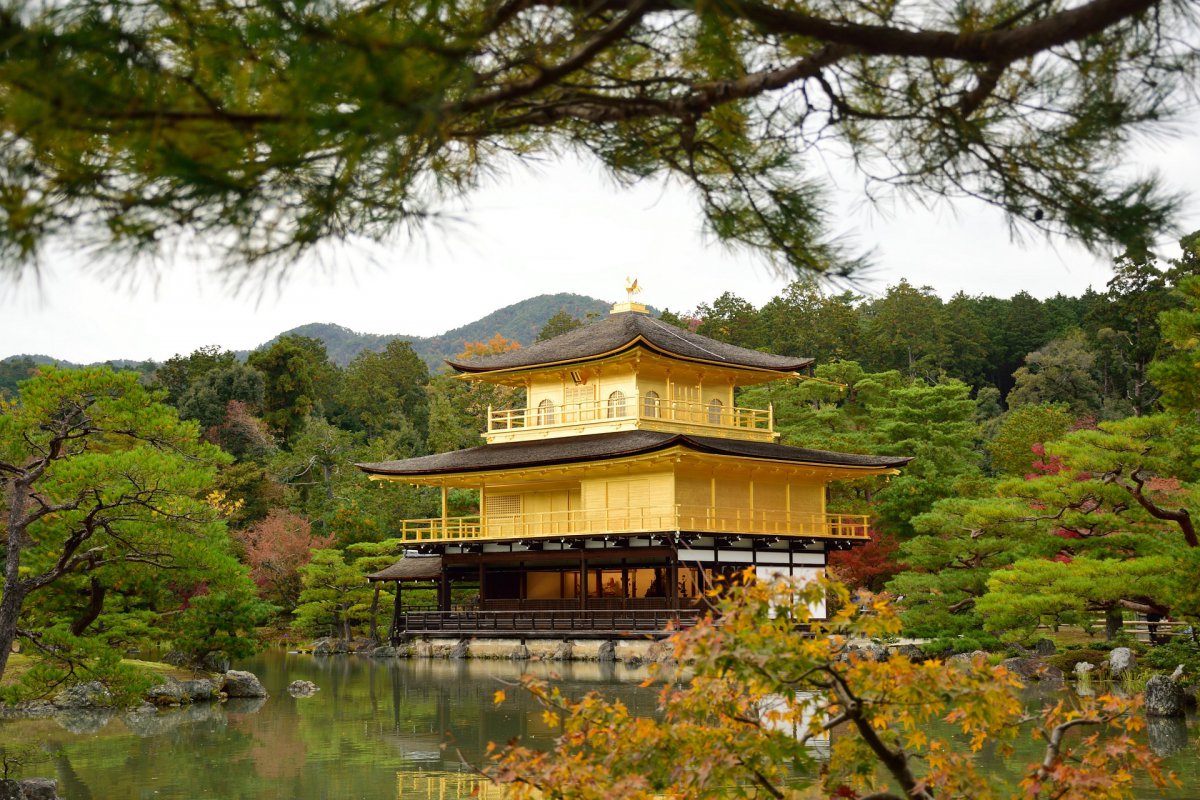
How to access Kinkakuji Temple
From Kyoto Station, take the Kyoto City Bus # 101 or 205 (40 min, ¥230).
Hasedera Temple, Kamakura
Hasedera is located in Kamakura city in the Kanagawa Prefecture. In 721, the monk Tokudo Shonin commissioned two statues of Kannon, the goddess of mercy, to be made from the same tree. Hasedera was built to house one of them. The statue was called the eleven-faced god since it has eleven heads on top of its own head. Today, it is the largest wooden statue in Japan, standing at nearly 10 meters tall.
The temple is also famous for a wide variety of flowers which bloom throughout the year. During the rainy season, it is extremely popular for its Hydrangea Path with over 2,500 hydrangea plants blooming. A waiting time of over 3 hours to enter the temple grounds on the weekends is not uncommon! Additionally, the scenic view from the observation platform on the upper ground is one of the most picturesque spots in Kamakura, offering a beautiful panoramic view of the city.
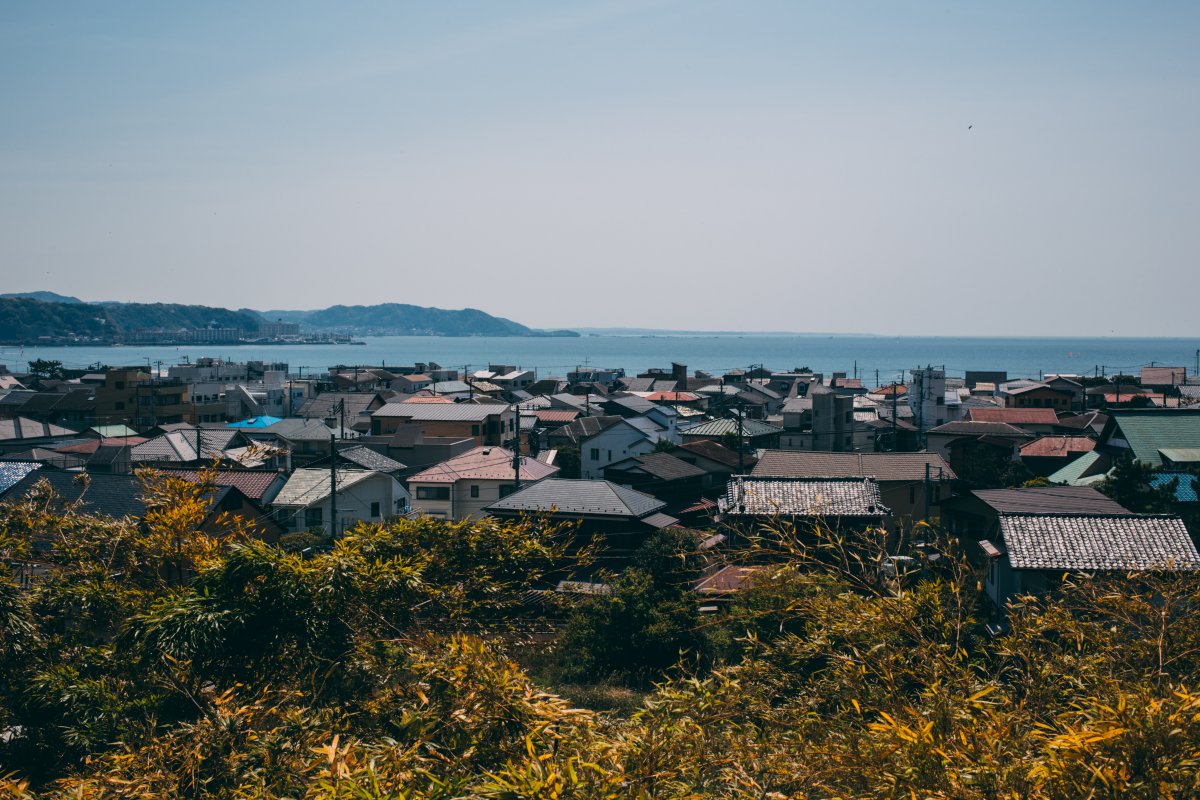
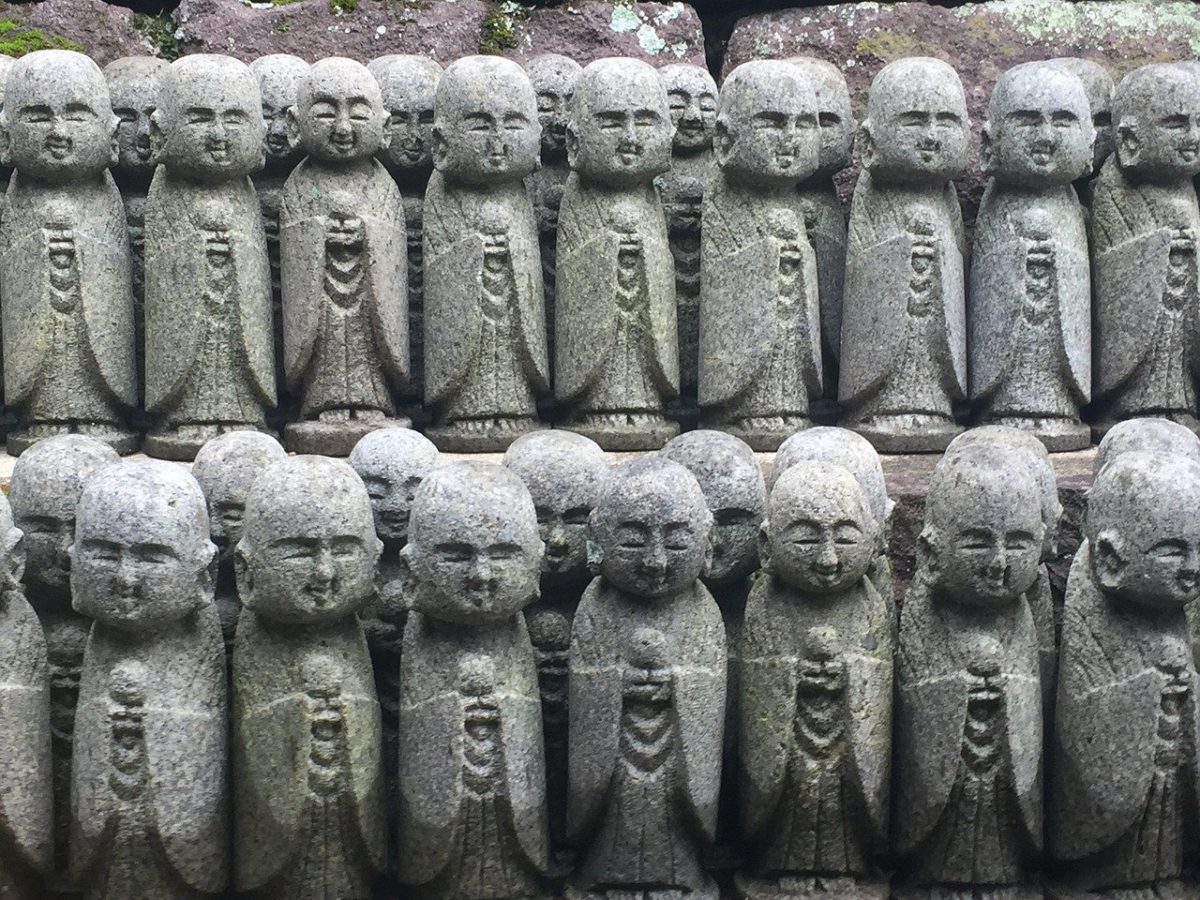
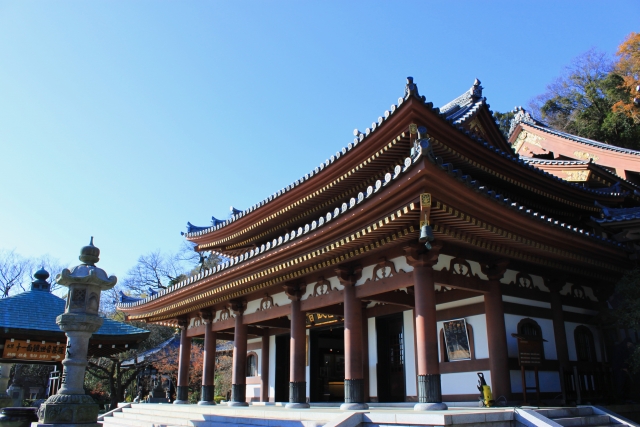
How to access Hasedera Temple
5 minute walk from Hase Station, a short ride from Kamakura Station on the Enoden railway line (12 min, ¥178).
Although many Japanese people today do not consider themselves Buddhists, Buddhism forms an important part of Japanese culture and people’s lives. Many people do visit temples on a frequent base, not always to pray to Buddha, but also to enjoy the beautiful sights at the temples, or admire the peaceful zen gardens. There are over 75.000 temples in Japan, some smaller, some very large, so when visiting Japan you will have the opportunity to visit the temples yourself. We hope with this information you can appreciate the Buddhist temples even more.
Follow us on Instagram or Facebook for more travel inspiration. Or tag us to get featured!
Happy traveling!
Recommended Buddhist Temple Tours:
